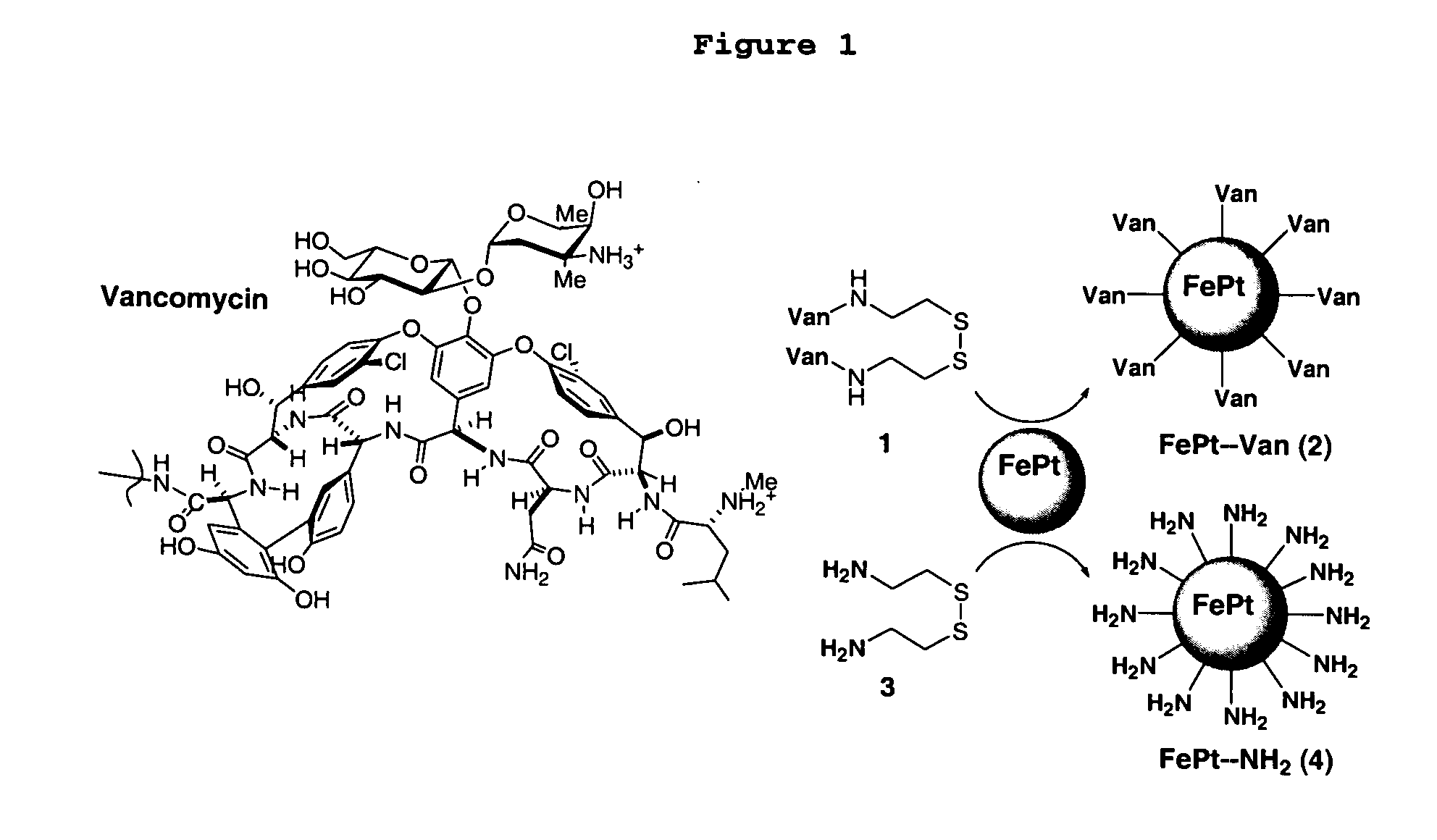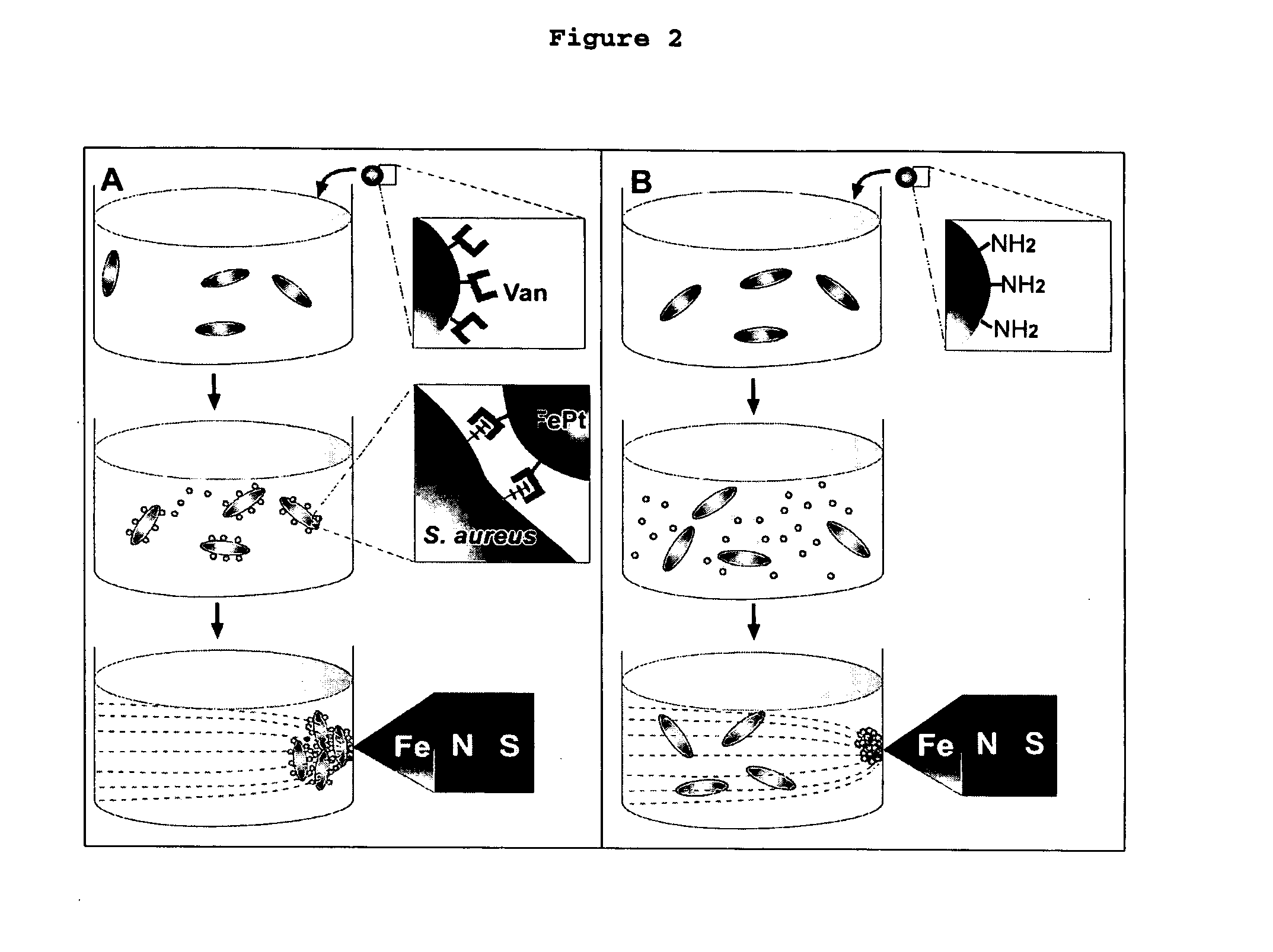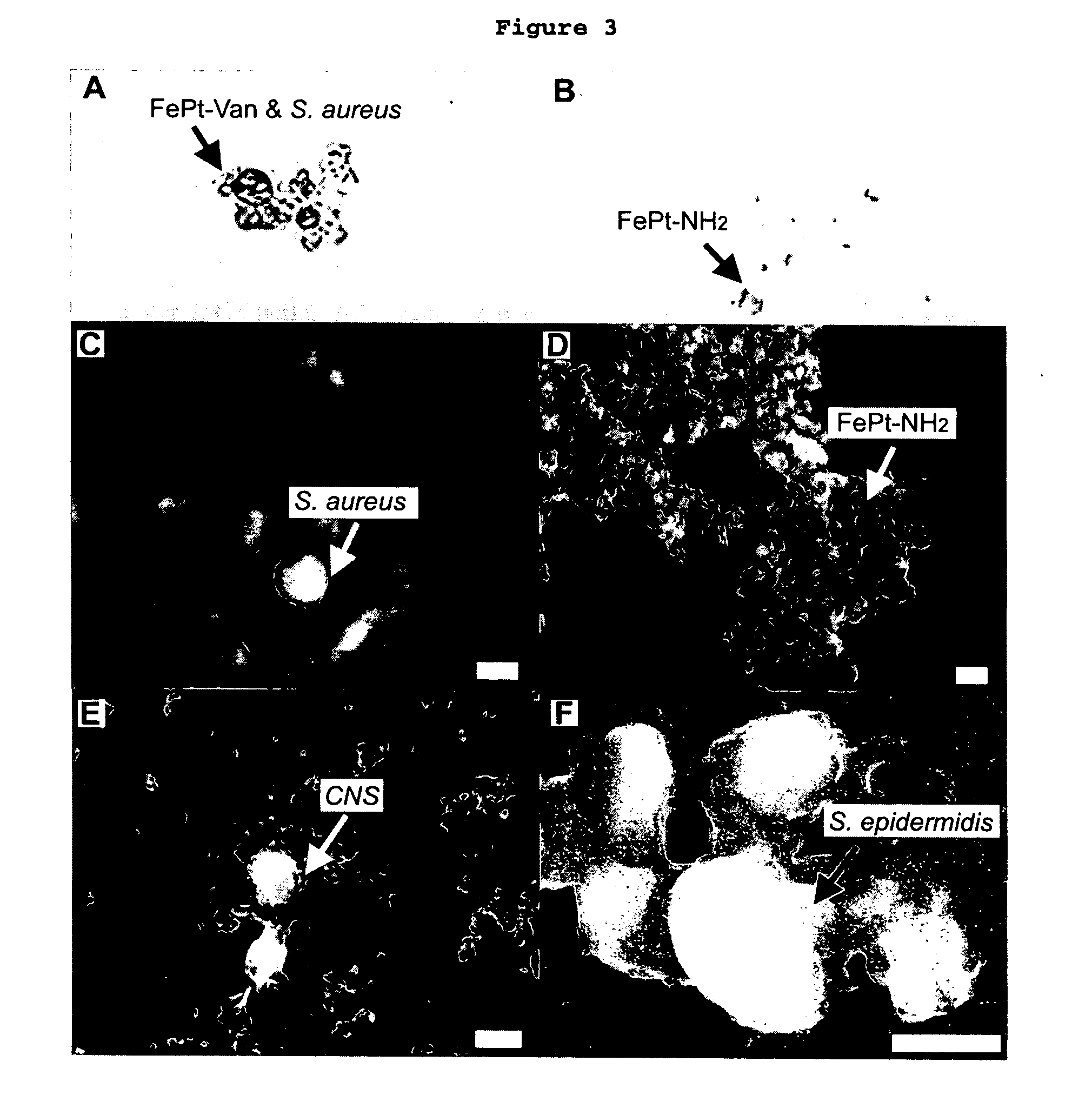Biofunctional magnetic nanoparticles for pathogen detection
a magnetic nanoparticle and biofunctional technology, applied in the field of pathogen detection, can solve the problems of not having general and satisfactory assays that can detect bacteria, and achieve the effect of increasing sensitivity and being easy to repor
- Summary
- Abstract
- Description
- Claims
- Application Information
AI Technical Summary
Benefits of technology
Problems solved by technology
Method used
Image
Examples
Embodiment Construction
[0019] This invention provides a method of detecting microorganisms comprising steps of: (a) contacting a sufficient amount of biofunctional magnetic nanoparticles with an appropriate sample for an appropriate period of time to permit the formation of complexes between the microorganisms and nanoparticles; (b) using a magnetic field to aggregate said complexes; and (c) detecting said complexes.
[0020] The sensitivity of detection for the method is at least as low as 10 colony forming units (cfu) of the microorganisms in one milliliter of solution. On the upward end, the method of the present invention is capable of detecting anywhere from about 20, 40, 60, 80, or 100 cfu / mL. For viruses, the method of the present invention is capable of detecting concentrations at least as low as 10 plaque forming units per one milliliter of solution (pfu / mL) and upwards of about 100, 500, or 1000 pfu / mL.
[0021] In one embodiment, the microorganisms are pathogens. As used herein, pathogens are defin...
PUM
 Login to View More
Login to View More Abstract
Description
Claims
Application Information
 Login to View More
Login to View More - R&D
- Intellectual Property
- Life Sciences
- Materials
- Tech Scout
- Unparalleled Data Quality
- Higher Quality Content
- 60% Fewer Hallucinations
Browse by: Latest US Patents, China's latest patents, Technical Efficacy Thesaurus, Application Domain, Technology Topic, Popular Technical Reports.
© 2025 PatSnap. All rights reserved.Legal|Privacy policy|Modern Slavery Act Transparency Statement|Sitemap|About US| Contact US: help@patsnap.com



